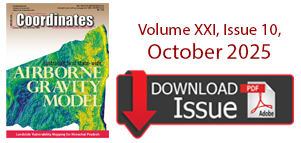| SDI | |
NSDI: Needs a magic wand
|
NSDI in India runs the risk of losing its relevance. That’s the reality and that’s the challenge. The NSDI VI meet in Goa (see sidebar) was not able to rejuvenate the movement which is slumped by the feel of fatigue and frustration. It was a high moment in the movement of NSDI when last year on June 13, the Government of India came out with a resolution on the constitution of NSDI. The resolution established National Spatial Data Committee (NSDC) as an apex national authority for formulating and implementing appropriate policies, strategies and programmes for the establishment, operation, management of the NSDI and utilization and any other activities related to spatial data in the country. Unfortunately, that became an end rather than a step to move forward; Nothing has moved thereafter. Even a single meeting of NSDC would have helped. Its absence in the Goa meet was both intriguing and disturbing. NSDI being no one’s priority has a future that is bleak. After six years of efforts, let us get back to basics. Who needs it? Who owns it? What drives it and what stops it? A time for introspection on what went wrong. Bal Krishna, Editor NSDI: Realities and Challenges28-29 June 2007, Goa, India The Chief Minister, Mr Digambar Kamat has felt the scope to set up state or regional chapters for the faster implementation of National Spatial Data Infrastructure (NSDI). The Goa government, he said, would love to offer the first hub for such a chapter for Western India. Mr Kamat was speaking after the inauguration of the two day National Spatial Data Infrastructure (NSDI) workshop “NSDI: Realties and Challenges” at Majorda, Goa. Mr Kamat also mentioned that with the notification of the Government of India on NSDI in June last year, it is possible to realize the dream of integrating all spatial datasets at its command into a user-friendly form for the economic development of the country. However, we must agree that we have a long way to go. The evolution of data conforming to uniform standards is a crucial requirement. Brig, Dr R Shiv Kumar, Head, NSDI, giving an overview of NSDI said, India has over the past produced abundance of qualitative map information through systematic topographic surveys, geological surveys, soil surveys, cadastral surveys, various natural resources inventory programmes and remote sensing images. With the availability of precision, highresolution satellite images, data enabling the organization of GIS, combined with theGPS, the accuracy and information content of these spatial datasets of maps is extremely high, he said. In this welcome address Director General of Forest Survey of India, Dr Devendra Pandey said that, our technology is our biggest strength and specially our remote sensing capabilities are one of the best in the world. The workshop was organized by the Forest Survey of India. It was attended by more than 70 delegates from different organizations from government, private and academia.
Goa CommuniqueThe following recommendations have been made by the delegates during the NSDI-VI workshop held at Majorda Beach Resorts,
|
|||||||||||||
Goa Communique9) Noting the excellent progress made by SOI, FSI, GSI, NBSSLUP, NATMO,NRSA, CWC, Census and NIC at theiragency- server level efforts of NSDI, it is time now to integrate and plug them to the NSDI Portal and widen the 10) The delegates discussed the provisions and implications of the National Map Policy – 2005 and noted that there is a need for addressing various aspects that impacts NSDI and GIS activities in the country in a major way. Thus, there is a need for dove-tailing the Map Policy and harmonizing it to further NSDI goals. In this connection, some of the important recommendations are as follows: a.) With the availability of OSM, a major effort at transforming the legacy Everest/Polyconic GIS databases of NIC, FSI, GSI, NBSSLUP, NRSA and many other agencies has to be undertaken. Towards, this either the transformation parameters have to be shared by SOI or an institutional b.) Clarity is needed in the variousterminologies of the Map Policy – as there were conflicting understandings of some of the terms. For example, there is a need for clear-cut DOs and c.) There is an urgent need to integrate and modify the existing policies for ground survey data, aerial surveys data, satellite data, topographic/thematic/census/ cadastral maps and GIS database into a comprehensive and holistic National Spatial Information Policy which will provide an over-arching 11) Recognize that the datasets generated in the private sector have got potential for many applications and thus be made part of NSDI metadata. The private industry should quickly come forward to populate the metadata as per the standard of NSDI which will reduce duplication of efforts; 12) NSDI, with the support of DST, should continue the actions for a standardized capacity building endeavor so that the required number of professionals are available for furthering the NSDI goals; 13) The NSDI Secretariat is charged to initiate actions on the above and coordinate the progress, review and completion of the actions; This Goa Communiqué for NSDI is adopted by 67 delegates from 12 departments/agencies at the 6th NSDI Workshop at Goa on 29th day of June 2007. |
|||||||||||||||
|
Pages: 1 2














 (2 votes, average: 3.00 out of 5)
(2 votes, average: 3.00 out of 5)




